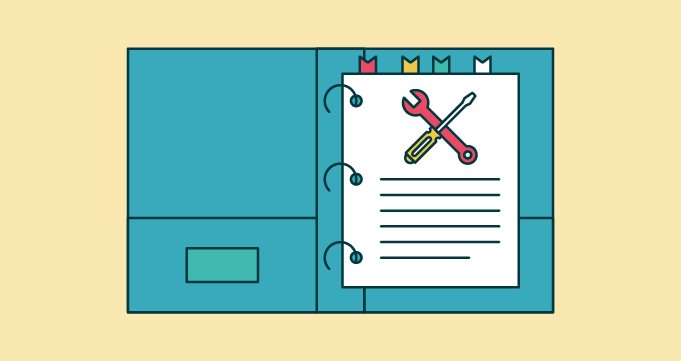Staffing your support center is a huge task. You post the job opening and interview dozens of people looking for the best. Eventually, your support center is staffed with the best and brightest agents you’ve ever had the pleasure of hiring. Since these new agents are so stellar, you decide you can save some time and forego the training.
But two weeks later your customer satisfaction is at an all time low. Customers are leaving left and right and your business might as well be on fire. Great customer service doesn’t just happen by itself, unfortunately. It takes training to ensure that your customer service team is providing the best possible service to each and every customer. An agent who received proper training is resourceful above all and won’t have to rely on protocol to resolve a ticket.
Here are some points to consider when providing customer service training for your own agents.
An empathetic trainer is a good trainer

Before you start, make sure you’re coming from a place of patience. It’s called training for a reason, and mistakes will happen. It can be easy to get frustrated with your new employees if they aren’t picking up new skills as quickly as you hoped, but remember that it won’t be the end of the world if they get a few things wrong. These mistakes can be used as an opportunity to teach. A little bit of empathy can go a long way in a learning environment.
No one can get anything done with someone constantly micromanaging behind their shoulder. Trust is just as important as patience. Your agents will be too intimidated to try anything by themselves, and that’s exactly the opposite of what you want. By showing your employee that you trust them, you’re letting them know that they can trust you too. They’ll be more forthcoming with questions or mistakes when they’re with a teacher they can trust.
Even though you, as a support manager, have likely been in customer service for a long time, don’t forget that it might be the trainees’ first time. So be transparent. Explain your steps and make sure they understand why the process is designed in a specific way. Answering their questions before they can ask them saves time and cuts out a lot of potential confusion.
No customer service training is going to be perfect and there’s going to be room for suggestions or tweaks. Be flexible and open to feedback on the fly from your trainees. You’ll want to make sure they get the skills they need, so don’t be afraid to adjust the program to fit your agents’ needs.
Diversify your training program
Before you start to build out your training program, research what best fits your needs. Finding the most efficient way can save you a lot of time, money, and maybe one or two headaches.
You can’t know right off the bat which kind of learner you’ll have on your hands, so include all four types of teaching:

1. Visual
Provide images in your program. If there’s a step-by-step protocol they need to follow, rather than to explain using words, use screen grabs, diagrams, or let them shadow colleagues.
2. Auditory
Hearing presentations are how auditory learners best process information. While those previously mentioned diagrams might not be as helpful, listening to a presentation could yield better results. Group discussions that allow your team to talk out ideas and information benefit auditory learners.
3. Reading
Some people can retain information if they simply read it. Provide some handouts with notes or add flip charts that list key concepts into your presentation.
4. Kinesthetic
Kinesthetic learners learn by doing, which means a lot of hands-on experience. Incorporate some simulations and demonstrations in your program. Use teach-backs to let them practice and show they understand the process.

A workshop is a good place to start for everyone to get the lay of the land and experience the support system. Incorporate seminars and knowledge checks to determine the level of understanding in your group. Demonstrate your support system so agents can run calls and tickets in their test accounts. Let your employees spend a few days here getting comfortable before they take on real tickets. Once their mentor is satisfied with their interactions with the customer, your customer service training is just about complete.
By incorporating all these different elements, you’re creating a well-rounded customer service program that’s sure to be inclusive of everyone’s needs. Using different tools and activities will also keep your customer service training fresh and interesting.
Also of note: a large team spread across different locations aren’t going to respond to a PowerPoint as well as a smaller localized group who can have discussions. No matter what technology you choose to distribute your information, match it to your training’s scope and the agents’ needs.
At-ease agents are better learners
Now think about the kind of atmosphere you want to create in the training program. It should foster trust amongst your team, especially if everyone hasn’t been working with each other for very long. If your agents don’t feel like it’s safe to make mistakes, all of your careful planning can go to waste.

Employee bonding events can build necessary trust within your team. It doesn’t have to be something as official as an offsite, but any opportunity for your team to get to know each other can prove invaluable. Let your participants talk to each other before training begins. Attend conferences together or have weekly team lunches. Get the team to spend time with each other outside of work, and you’ll notice a difference in their teamwork.
Trust between the trainer and the agents is just as important as trust among the agents. Keep your body language open and accepting, and encourage questions. If your agents see you as someone they can turn to with questions and advice, you’ll see an increase in the effectiveness of your customer service representatives (and higher customer satisfaction).

Most important, promote a culture of transparency in your training space. Walking through your train of thought will provide clarity and insights to a new process. Once they understand the thought process behind the training, your agents will need less guidance when they start taking support tickets on by themselves. You can also take this chance to flip the classroom and let your team explore and explain the process.
Ask your team what they thought
When training ends, it can be extremely beneficial to get an unbiased look at how your team felt about your program. Get feedback from your agents or an employee whom your agents interacted with. An anonymous survey might give your team the security to speak up about potential customer service issues they felt could be improved on.
Well-trained agents mean happy customers
No amount of protocol can make up for an employee who hasn’t been taught best practices. Your customers need to interact with skilled, empathetic agents who can help them solve their problems, which can be a challenging element of the customer experience. Customer service can very difficult at times, so it’s important that your team receives training that’ll properly equip them with the skills to handle any kind of situation.
